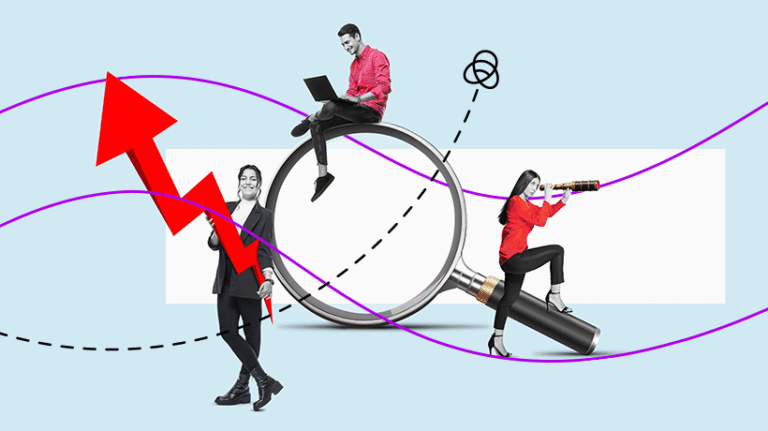In recent years, the retail landscape in Australia has experienced a seismic shift. E-commerce has exploded in popularity, while brick-and-mortar stores face challenges in keeping customers engaged. In this evolving environment, Augmented Reality (AR) is emerging as a powerful tool that allows Australian retailers to create immersive, interactive, and personalized shopping experiences that bridge the gap between the physical and digital worlds.
AR is revolutionizing the way Australians shop, turning mundane trips to the store into engaging, fun, and seamless experiences. From virtual try-ons to in-store navigation, the potential for AR to transform retail is limitless. In this blog, we’ll explore the key ways AR is changing the retail landscape in Australia and how it’s shaping the future of shopping.
1. Virtual Try-Ons: A New Era for Fashion and Beauty
One of the most exciting applications of AR in Australian retail is virtual try-ons. Whether it’s trying on clothes, makeup, or accessories, AR allows customers to see how products will look on them without ever having to physically touch them. This technology is making it easier for shoppers to make confident buying decisions, reducing the uncertainty often associated with online shopping.
In fashion, Australian retailers like The Iconic and Myer are using AR to let customers virtually try on clothes or accessories before making a purchase. Through their apps or in-store AR mirrors, customers can see how different outfits or shoes would look on their bodies, removing the need to try on multiple items or risk buying the wrong size.
Similarly, in the beauty sector, major Australian brands like Sephora and Mecca have integrated AR into their mobile apps, allowing customers to virtually try on makeup shades in real-time. These experiences make it easier for shoppers to experiment with colors and products, enhancing their overall shopping experience.
2. In-Store Navigation: Enhancing the Physical Shopping Experience
Navigating large retail stores or malls can sometimes feel overwhelming, especially in major shopping centers like Westfield Sydney or Chadstone in Melbourne. AR is helping to improve this aspect of the retail journey by offering virtual in-store navigation.
Using AR-enabled apps, customers can get real-time directions to specific products or sections of the store, similar to how Google Maps works for navigating streets. For example, if a customer is searching for a specific item like a pair of jeans in a massive department store, the AR app will show them the exact aisle or section where they can find it.
This can drastically improve the customer experience, reducing the frustration of walking around aimlessly and allowing shoppers to spend more time exploring and making purchases. It’s particularly useful for large, multi-floor retailers where finding what you’re looking for can take time.
3. Interactive Displays and Product Visualization
AR is also being used to create highly interactive product displays that engage customers in new and innovative ways. Retailers are placing AR-activated displays in stores, allowing customers to scan QR codes or images with their smartphones to see additional product information, promotional videos, or even interactive demos.
For instance, furniture stores like IKEA Australia have adopted AR to help customers visualize how furniture will look in their own homes. Through their app, customers can use AR to place a virtual version of a couch, table, or lamp in their living room, adjusting the size, color, and placement to see if it matches their space. This reduces the uncertainty many customers face when purchasing bulky or expensive items.
Similarly, AR-powered signage or displays can be used to bring products to life in unexpected ways. In the food and beverage sector, AR can provide recipe ideas, cooking demonstrations, or even nutritional information in an engaging format, helping customers make informed purchasing decisions.
4. Personalized Shopping Experience
AR is helping Australian retailers create highly personalized shopping experiences that cater to individual tastes and preferences. Through AR, retailers can offer tailored recommendations, personalized discounts, or exclusive content that speaks directly to the needs of the customer.
Imagine walking into a store, and as you pick up a product, the AR system detects your interest and immediately displays more details about the product, such as customer reviews, related items, or even special offers. In fashion, AR could show you other items that match your personal style based on previous purchases or your current choices, making the shopping experience feel more curated and relevant.
For example, Australian fashion retailer David Jones is exploring how AR can offer a more personalized in-store shopping experience by helping customers visualize outfits or receive custom styling tips through their mobile devices.
5. Bringing the Digital World into the Physical Store
AR allows retailers to integrate the digital world into their physical stores, creating a hybrid shopping experience that blends online convenience with offline engagement. This could mean providing customers with detailed product information, promotions, or even interactive brand stories right at their fingertips.
For example, through AR-powered apps, customers could scan products on the shelves and instantly access online reviews, videos, or even tutorials. This “digital layer” enhances the physical shopping experience, giving customers the power of online research without ever leaving the store.
Moreover, some Australian retailers have begun experimenting with AR-powered experiences that blend entertainment with shopping. Take the example of an interactive AR display that takes customers on a virtual journey through the history of a brand or provides a scavenger hunt in-store, encouraging customers to explore the store in a fun and engaging way.
6. AR in Retail Advertising and Marketing
Retailers in Australia are also using AR to enhance their advertising and marketing efforts. Whether through interactive billboards, online ads, or promotional campaigns, AR is enabling more engaging and immersive ways to connect with customers. Instead of static ads, AR creates interactive experiences where customers can engage with the product in a deeper, more meaningful way.
For example, an Australian fashion brand could launch an AR ad campaign where customers can scan a billboard or a magazine ad with their phone, triggering a virtual fashion show or giving them the ability to “try on” clothes directly from the ad. This type of interactive advertising is memorable and provides a more direct connection between the customer and the product.
In addition, AR can bring storytelling to life in marketing. A brand could use AR to narrate its heritage, values, or manufacturing processes in a way that is visually compelling and immersive, allowing customers to connect emotionally with the brand on a deeper level.
7. Enhancing Sustainability with AR
Sustainability is increasingly becoming a significant consideration for Australian consumers, and AR can play a pivotal role in promoting eco-friendly products and practices. Retailers can use AR to educate customers about the sustainability of the products they’re buying, including the materials used, the carbon footprint, or the ethical practices behind the brand.
For example, by scanning a product with an AR app, customers could access detailed information about the product’s environmental impact, helping them make more informed and eco-conscious purchasing decisions. This transparency adds an extra layer of trust and loyalty, particularly among younger, environmentally-conscious consumers.
Conclusion: AR as the Future of Retail in Australia
The role of AR in Australian retail is rapidly growing and continues to evolve as technology advances. By creating immersive, interactive, and personalized experiences, AR is helping retailers in Australia attract and retain customers, enhance the shopping experience, and bridge the gap between the physical and digital worlds.
From virtual try-ons and interactive product displays to in-store navigation and personalized recommendations, AR is redefining the way Australians shop. As the technology becomes more integrated into retail environments, we can expect to see even more innovative applications that will continue to elevate the customer experience.
For Australian retailers looking to stay competitive in a rapidly changing market, adopting AR technology is no longer just a trend—it’s a necessity. The future of shopping in Australia is immersive, engaging, and driven by AR innovation, and it’s only just beginning.








